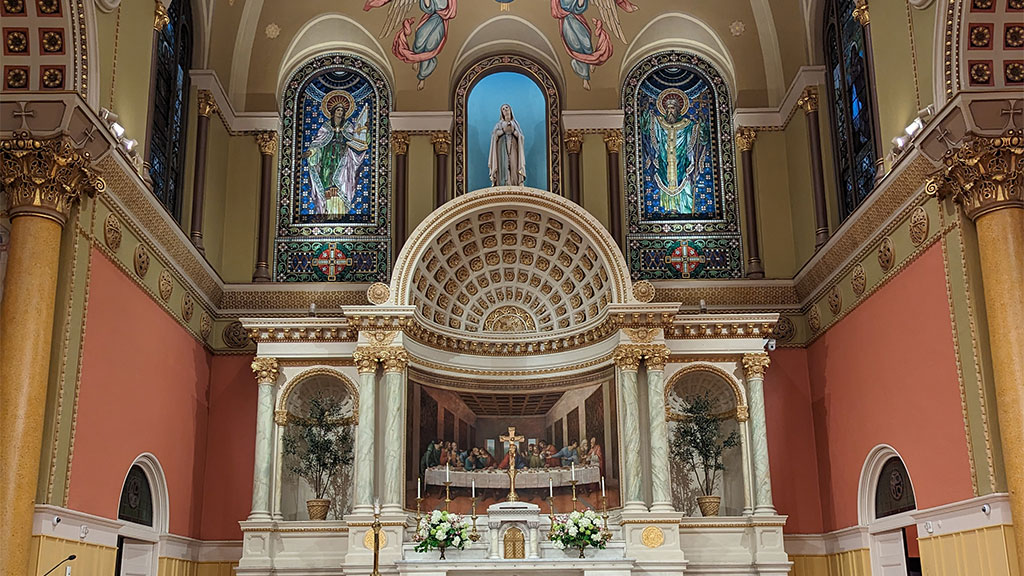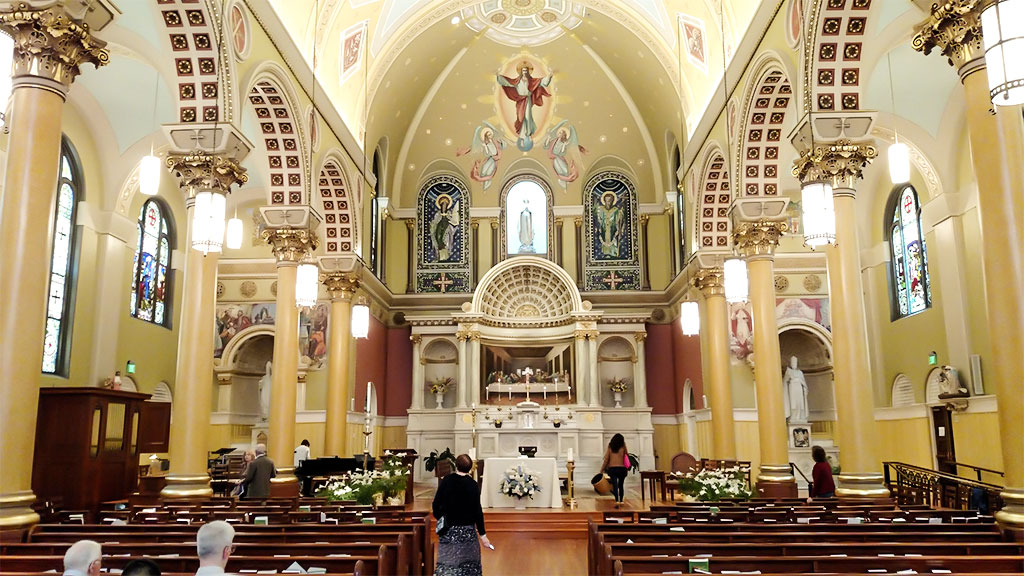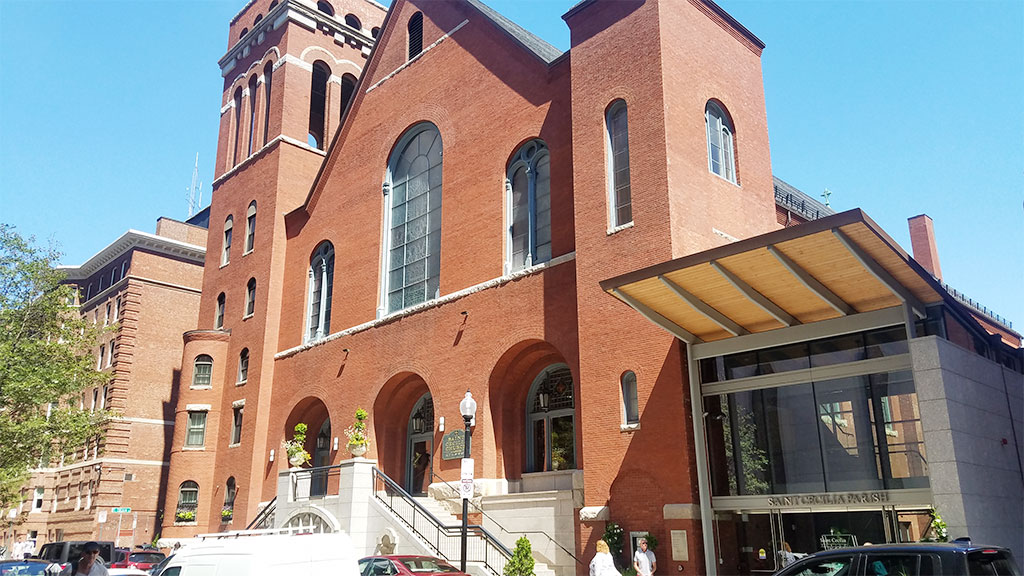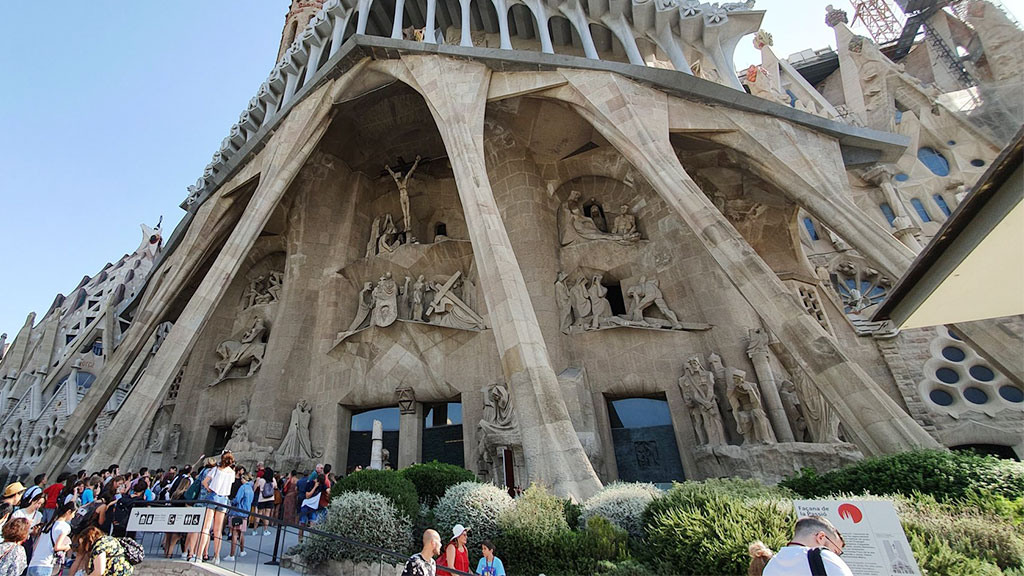In the vivid tapestry of Boston’s rich history, the influence of the Catholic Church weaves a compelling narrative that has shaped the city’s cultural and social landscape.
From the early days of settlement to the present, the story of Boston’s Catholic history is a testament to faith, resilience, and community building.
Exploring the historical milestones, prominent figures, and enduring legacies of Catholicism in Boston unveils a captivating saga of devotion and progress.
Throughout the centuries, Boston’s Catholic heritage has left an indelible mark on the city, reflected in its architecture, institutions, and traditions.
Delving into the annals of Boston’s Catholic past offers a fascinating glimpse into the pivotal role that religion has played in shaping the identity of this dynamic metropolis.
Join us on a journey through time as we uncover the compelling narrative of Boston’s Catholic history and its lasting impact on the city and its people.
Early History of the Boston Catholic Church

The early history of the Boston Catholic Church is a tale of perseverance and dedication in the face of adversity.
From its humble beginnings to becoming a prominent force in Boston’s religious landscape, the Catholic Church has played a crucial role in shaping the city’s cultural identity.
Origins and Initial Challenges
The Boston Catholic Church traces its roots back to the early 19th century when a small community of Catholics began to form in the burgeoning city.
Facing discrimination and suspicion in a predominantly Protestant society, early Catholic settlers encountered significant challenges in practicing their faith openly.
Despite these obstacles, they established the first Catholic church in Boston in 1788, laying the foundation for growth and acceptance in the years to come.
The rich history of the Boston Catholic Church is a testament to the resilience and perseverance of the early Catholic community in the face of adversity.
As the first Catholic church in Boston in 1788 laid the foundation for future growth and acceptance, subsequent generations continued to build upon this legacy, shaping the vivid Catholic heritage that thrives in Boston today.
Key Historical Figures
The early history of the Catholic Church in Boston is rich and spans several centuries.
Some key historical figures include:
Jean-Louis Lefebvre de Cheverus (1768-1836)
Jean-Louis Lefebvre de Cheverus was a French missionary and the first Bishop of Boston, appointed in 1808.
Born in France, he arrived in Boston in 1796 and quickly became a beloved figure among Catholics and non-Catholics alike for his humility, compassion, and dedication to his flock.
Cheverus established the first Catholic church in Boston, the Holy Cross Cathedral, and focused on building bridges between the Catholic community and the wider society.
He also played a crucial role in providing spiritual guidance to the growing number of immigrants in the region, many of whom were Irish fleeing famine and poverty.
Benedict Joseph Fenwick (1782-1846)
Benedict Joseph Fenwick, a Maryland native, succeeded Cheverus as Bishop of Boston in 1825. He continued the work of his predecessor, expanding the Church’s presence in New England.
Fenwick was instrumental in founding several educational institutions, including the College of the Holy Cross in Worcester, Massachusetts, and Boston College.
These institutions were pivotal in providing education to Catholic youth and promoting intellectual growth within the Church.
Fenwick’s tenure laid the foundation for the Catholic Church’s lasting influence in education and social services throughout the region.
John Joseph Williams (1822-1907)
John Joseph Williams became Archbishop of Boston in 1866, succeeding Archbishop John Fitzpatrick.
Williams oversaw a period of significant growth for the Catholic Church in Boston, marked by the construction of numerous churches, schools, and charitable institutions.
He played a vital role in expanding the Church’s outreach to the diverse immigrant communities arriving in Boston during the late 19th century, including Irish, Italian, and Eastern European immigrants.
Williams’ leadership strengthened the Church’s organizational structure and its ability to meet the spiritual and social needs of its growing congregation.
William Henry O’Connell (1859-1944)
William Henry O’Connell was appointed Archbishop of Boston in 1907 and later elevated to Cardinal in 1911. O’Connell’s tenure was characterized by a focus on modernization and institutional expansion.
He oversaw the completion of the Cathedral of the Holy Cross, which remains a prominent landmark in Boston today.
O’Connell also emphasized the importance of Catholic education, expanding parochial schools and promoting higher education through Boston College and other institutions.
His efforts contributed to the Church’s increasing influence in Boston’s civic and cultural life during the early 20th century.
Richard James Cushing (1895-1970)
Richard James Cushing became Archbishop of Boston in 1944 and was elevated to Cardinal in 1958.
Known for his progressive views and commitment to social justice, Cushing played a pivotal role in advocating for civil rights and improving relations between Catholics and other religious communities.
He supported Vatican II reforms and modernized many aspects of Church administration in Boston.
Cushing’s tenure also saw the growth of Catholic Charities and increased involvement of the Church in addressing social issues such as poverty and housing. His dynamic leadership left a lasting impact on the Catholic Church in Boston and beyond.
Humberto Sousa Medeiros (1915-1983)
Humberto Sousa Medeiros succeeded Cardinal Cushing as Archbishop of Boston in 1970 and was also elevated to Cardinal.
Medeiros focused on addressing the challenges faced by the Church during a period of societal change and shifting demographics in Boston.
He emphasized outreach to marginalized communities, including immigrants and minorities, and worked to strengthen the Church’s commitment to social justice and community service.
Medeiros’ leadership helped stabilize the Church during turbulent times and fostered a renewed sense of mission among Boston’s Catholics.
Development of the Archdiocese

The evolution of the Archdiocese of Boston mirrors the city’s growth and the enduring influence of the Catholic Church.
Through periods of adversity and triumph, the Archdiocese has played a fundamental role in shaping Boston’s religious landscape and cultural heritage.
Formation and Expansion
The formation of the Archdiocese of Boston can be traced back to the early 19th century when the Catholic community faced discrimination and challenges in practicing their faith openly.
Despite these obstacles, the Archdiocese steadily expanded its presence, establishing churches, schools, and charitable institutions that became integral parts of Boston’s social fabric.
Over time, the Archdiocese of Boston grew to become a significant religious and cultural influence in the region, shaping not only the spiritual landscape but also contributing to the overall development and identity of the city.
Notable Bishops and Their Contributions
Throughout its history, the Archdiocese of Boston has been led by remarkable bishops whose contributions have left a lasting impact on the region.
Bishop Benedict Joseph Fenwick, the first Bishop of Boston, laid a strong foundation for the Church’s growth, emphasizing education and community outreach.
Archbishop John Joseph Williams, known for his visionary leadership, spearheaded initiatives that transformed the Archdiocese and solidified its place in Boston’s history.
The legacy of these bishops continues to shape the Archdiocese’s mission and values, reflecting their unwavering dedication to serving the Catholic community in Boston.
Social and Cultural Impact

The Catholic Church in Boston has had a profound influence on the city’s social fabric and cultural identity.
Key figures like Bishop Benedict Joseph Fenwick and Archbishop John Joseph Williams played pivotal roles in shaping the Church’s growth and impact on Boston.
Education and Schools
The Boston Catholic Church has been instrumental in providing education and establishing schools that have significantly contributed to the city’s academic landscape.
Schools such as Boston College and Emmanuel College have a rich history of academic excellence and have molded generations of students with a strong foundation in Catholic values.
Furthermore, the Boston Catholic Church has played a crucial role in shaping the cultural and religious fabric of the city, with institutions like the Cathedral of the Holy Cross standing as a testament to the rich Catholic heritage in Boston.
Charitable Activities and Social Services
Through various charitable initiatives and social services, the Catholic Church in Boston has been a cornerstone of support for the community.
Organizations like Catholic Charities Archdiocese of Boston have played a crucial role in providing assistance to those in need, embodying the Church’s commitment to serving the less fortunate and fostering a sense of community and compassion in Boston.
With a rich history dating back centuries, the Boston Catholic community has established a legacy of philanthropy and outreach that continues to positively impact the local population.
The initiatives undertaken by organizations like Catholic Charities Archdiocese of Boston highlight the unwavering dedication of the Church to supporting those facing hardships and promoting unity within the city.
Controversies and Challenges

The Boston Catholic history, while significant, has not been devoid of controversies and challenges. Two prominent aspects that have marred the Church’s reputation are the clergy sexual abuse scandals and the subsequent reforms and responses.
Clergy Sexual Abuse Scandals
Instances of clergy sexual abuse scandals have shaken the foundations of the Catholic Church in Boston. The exposure of these scandals revealed widespread misconduct within the clergy, leading to a loss of trust among the faithful and severe repercussions for the Church’s credibility.
These disturbing revelations not only impacted the victims but also raised questions about the Church’s handling of such heinous acts.
Moving forward, it is crucial for the Church in Boston to prioritize transparency, accountability, and proactive measures to prevent any recurrence of such incidents in the future.
Restoring faith and trust within the community will require a concerted effort from church officials and a commitment to addressing these issues head-on.
Reforms and Responses
In response to the clergy sexual abuse scandals, the Boston Archdiocese implemented significant reforms to address the systemic issues that allowed such abuses to occur unchecked.
These reforms included establishing stringent protocols for reporting and investigating allegations, enhancing child protection measures, and providing support services for survivors.
The Church’s proactive approach aimed to rebuild trust, promote transparency, and ensure the safety and well-being of its members.
Modern Developments and Future Outlook
In examining the modern developments and future outlook for the Catholic Church in Boston, it is essential to consider the current leadership and strategies, as well as the growth and challenges faced in the 21st century.
Current Leadership and Strategies
Under the current leadership of Cardinal Seán Patrick O’Malley, the Archdiocese of Boston has focused on enhancing transparency, accountability, and safeguarding practices.
Cardinal O’Malley has been instrumental in implementing policies to prevent future instances of clergy sexual abuse and to address past wrongs.
By prioritizing open communication and cooperation with law enforcement authorities, the Archdiocese aims to maintain the trust of its members and the broader community.
Furthermore, Cardinal O’Malley has actively engaged with survivors of abuse and has shown a deep commitment to seeking justice and healing for those affected by past misconduct within the Church.
His efforts towards reconciliation and support have been widely recognized both locally and nationally.
Growth and Challenges in the 21st Century
In the 21st century, the Catholic Church in Boston continues to experience growth in diverse communities while grappling with various challenges.
The church has adapted to changing demographics by embracing multiculturalism and providing services in multiple languages to cater to a broader audience.
However, challenges persist, including declining attendance at traditional services, financial strains due to legal settlements, and evolving societal attitudes towards religion.
By engaging with these challenges proactively and leveraging its rich history and community connections, the Catholic Church in Boston seeks to navigate the complexities of the modern era and ensure its relevance and sustainability for future generations.
Frequently Asked Questions
How did the Catholic Church influence Boston’s history?
The Catholic Church has deeply shaped Boston’s history since the early 19th century. Key figures like Bishop Benedict Joseph Fenwick and Archbishop John Joseph Williams played crucial roles.
What role has the Catholic Church played in Boston’s community?
Through its long history in Boston, the Catholic Church has been instrumental in education, community outreach, and charitable endeavors.
Conclusion
Reflecting on Boston’s Catholic history reveals a rich tapestry woven with influential figures and transformative events that have shaped the city’s religious and social landscape.
From Bishop Benedict Joseph Fenwick’s pioneering efforts in the early 19th century to the contemporary leadership of Cardinal Seán Patrick O’Malley, the Archdiocese of Boston has navigated through triumphs and challenges, leaving an indelible mark on the community.
Despite navigating through turbulent waters marked by clergy sexual abuse scandals, the Boston Archdiocese’s commitment to reform and transparency stands as a beacon of hope.
By prioritizing accountability, child protection measures, and victim support services, the Church has embarked on a path of healing and renewal, aiming to prevent future abuses and rectify past injustices.
Looking ahead, the Catholic Church in Boston faces a landscape filled with both promise and uncertainty.
Embracing the city’s diverse communities, language services, and proactive engagement with evolving societal norms are crucial steps toward securing its relevance and sustainability in the 21st century.
Jaclyn Lowe